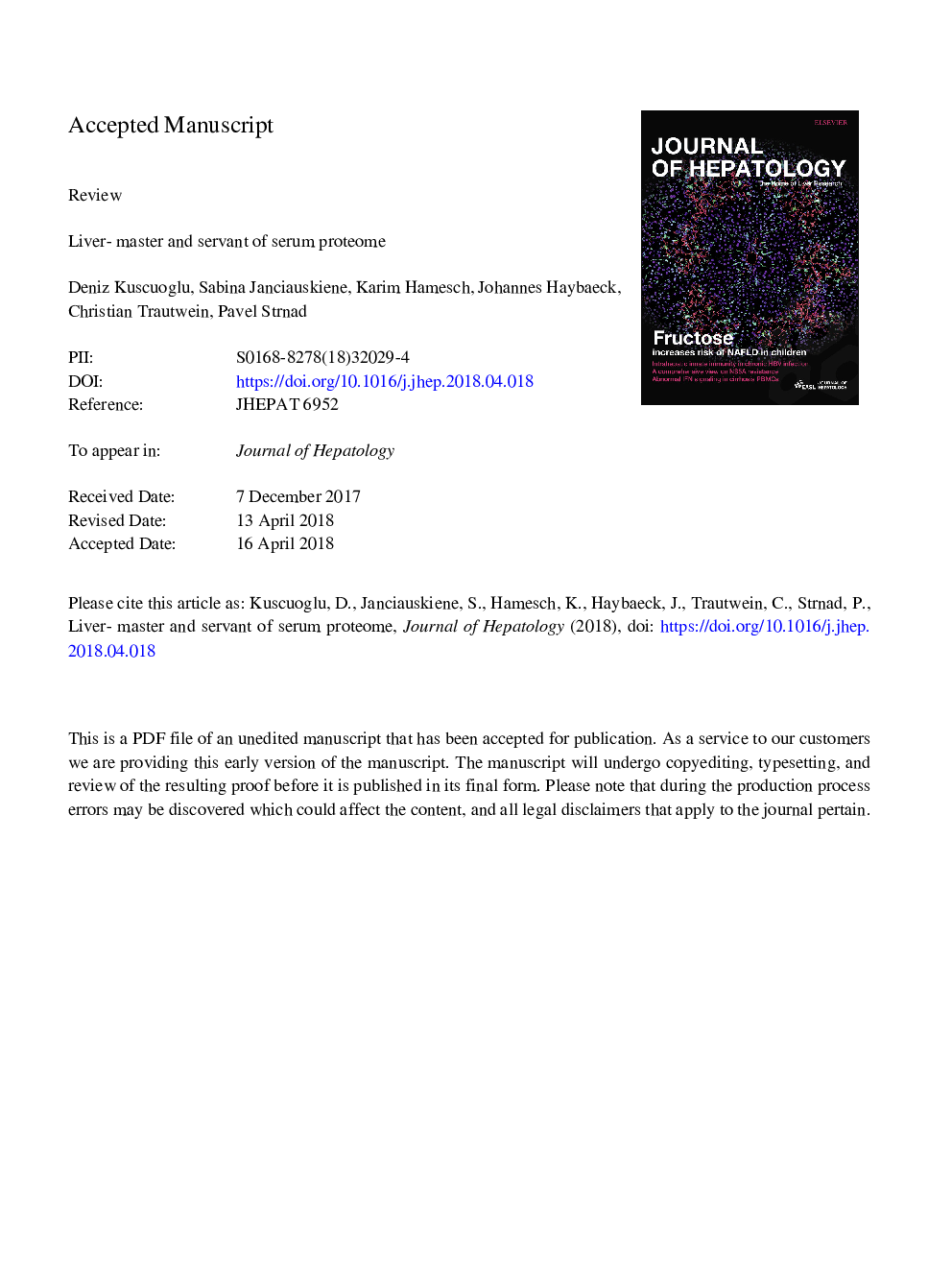| Article ID | Journal | Published Year | Pages | File Type |
|---|---|---|---|---|
| 8728909 | Journal of Hepatology | 2018 | 42 Pages |
Abstract
Hepatocytes synthesise the majority of serum proteins. This production occurs in the endoplasmic reticulum (ER) and is adjusted by complex local and systemic regulatory mechanisms. Accordingly, serum levels of hepatocyte-made proteins constitute important biomarkers that reflect both systemic processes and the status of the liver. For example, C-reactive protein is an established marker of inflammatory reaction, whereas transferrin emerges as a liver stress marker and an attractive mortality predictor. The high protein flow through the ER poses a continuous challenge that is handled by a complex proteostatic network consisting of ER folding machinery, ER stress response, ER-associated degradation and autophagy. Various disorders disrupt this delicate balance and result in protein accumulation in the ER. These include chronic hepatitis B infection with overproduction of hepatitis B surface antigen or inherited alpha1-antitrypsin deficiency that give rise to ground glass hepatocytes and alpha1-antitrypsin aggregates, respectively. We review these ER storage disorders and their downstream consequences. The interaction between proteotoxic stress and other ER challenges such as lipotoxicity is also discussed. Collectively, this article aims to sharpen our view of liver hepatocytes as the central hubs of protein metabolism.
Keywords
Related Topics
Health Sciences
Medicine and Dentistry
Gastroenterology
Authors
Deniz Kuscuoglu, Sabina Janciauskiene, Karim Hamesch, Johannes Haybaeck, Christian Trautwein, Pavel Strnad,
